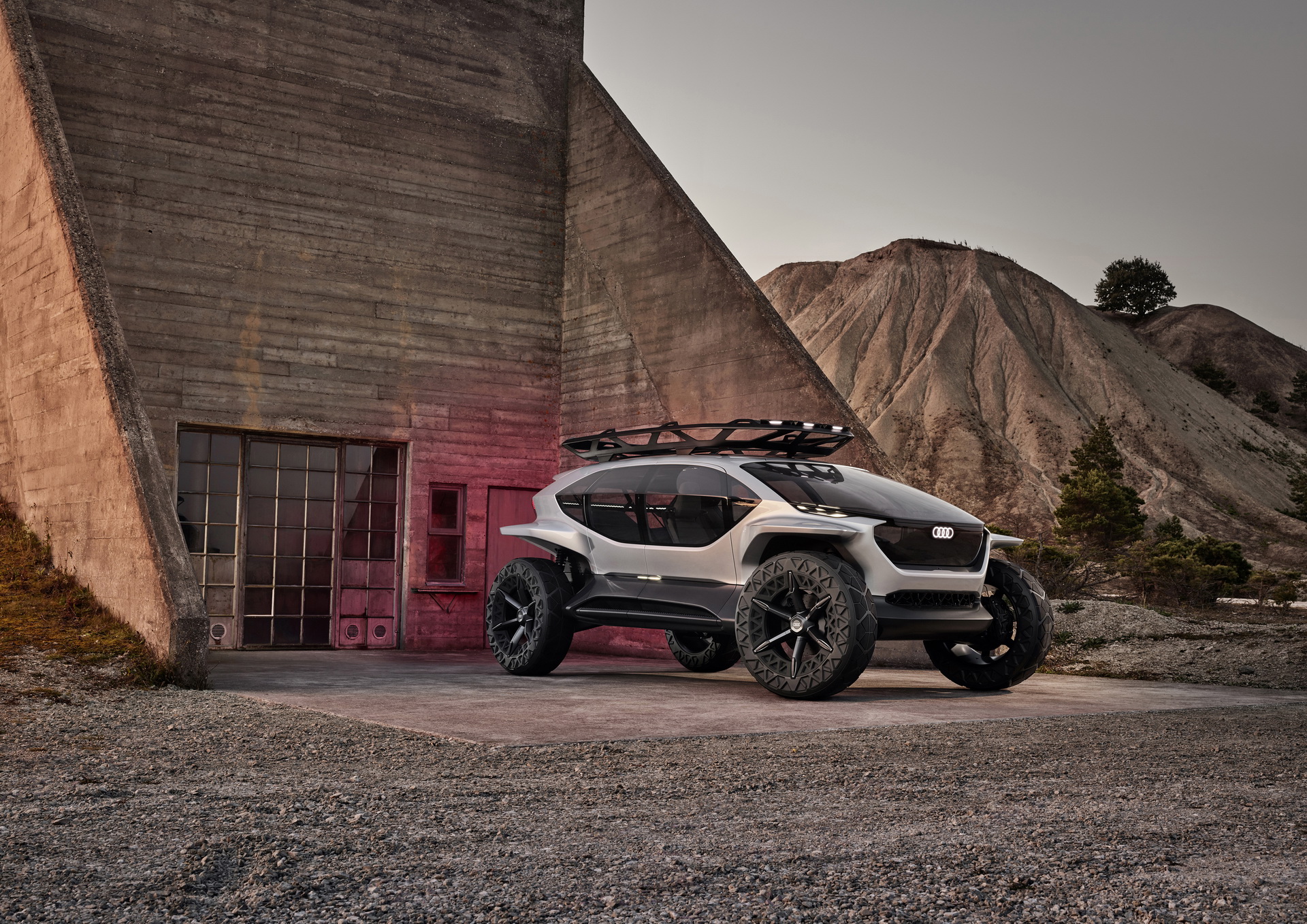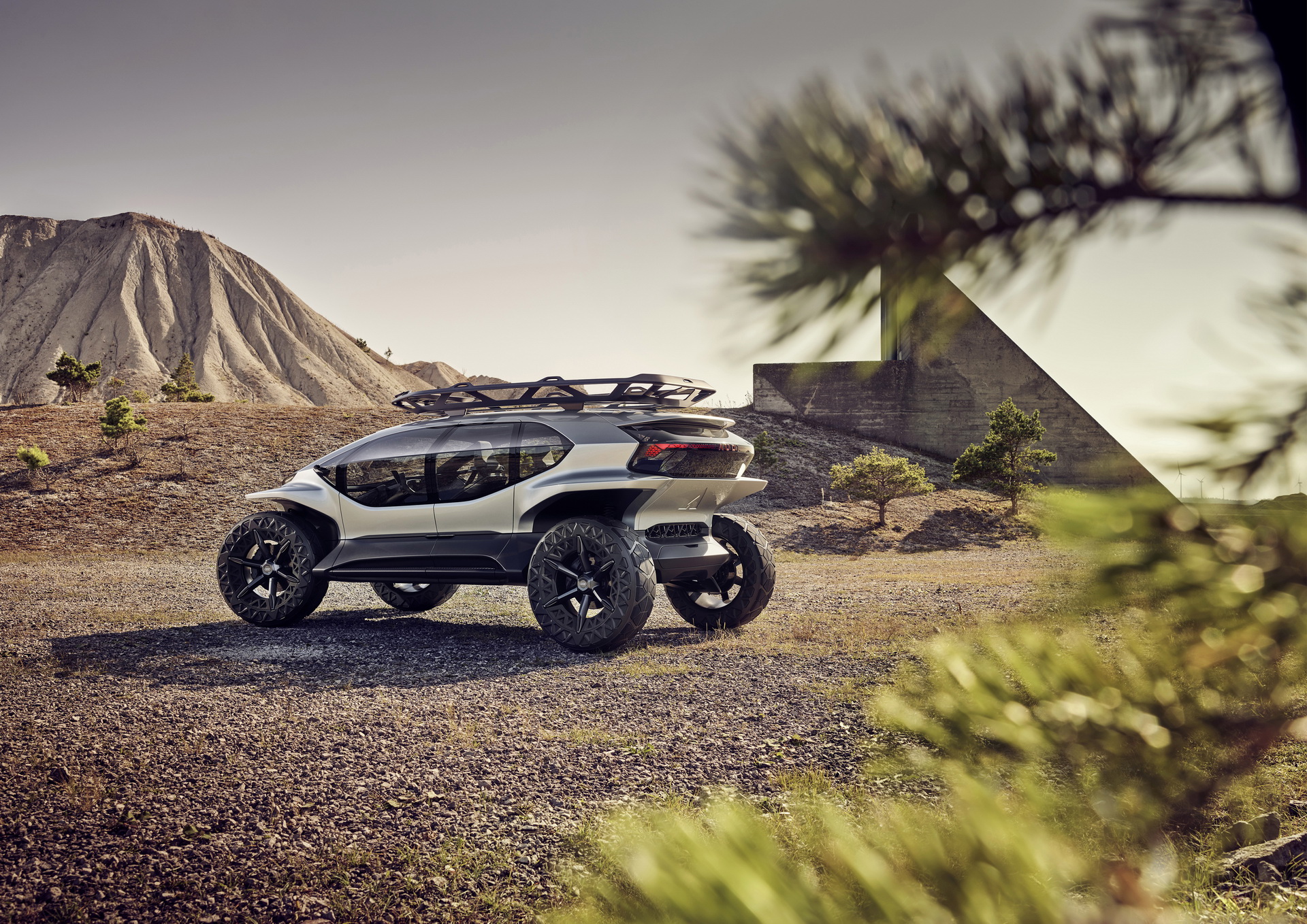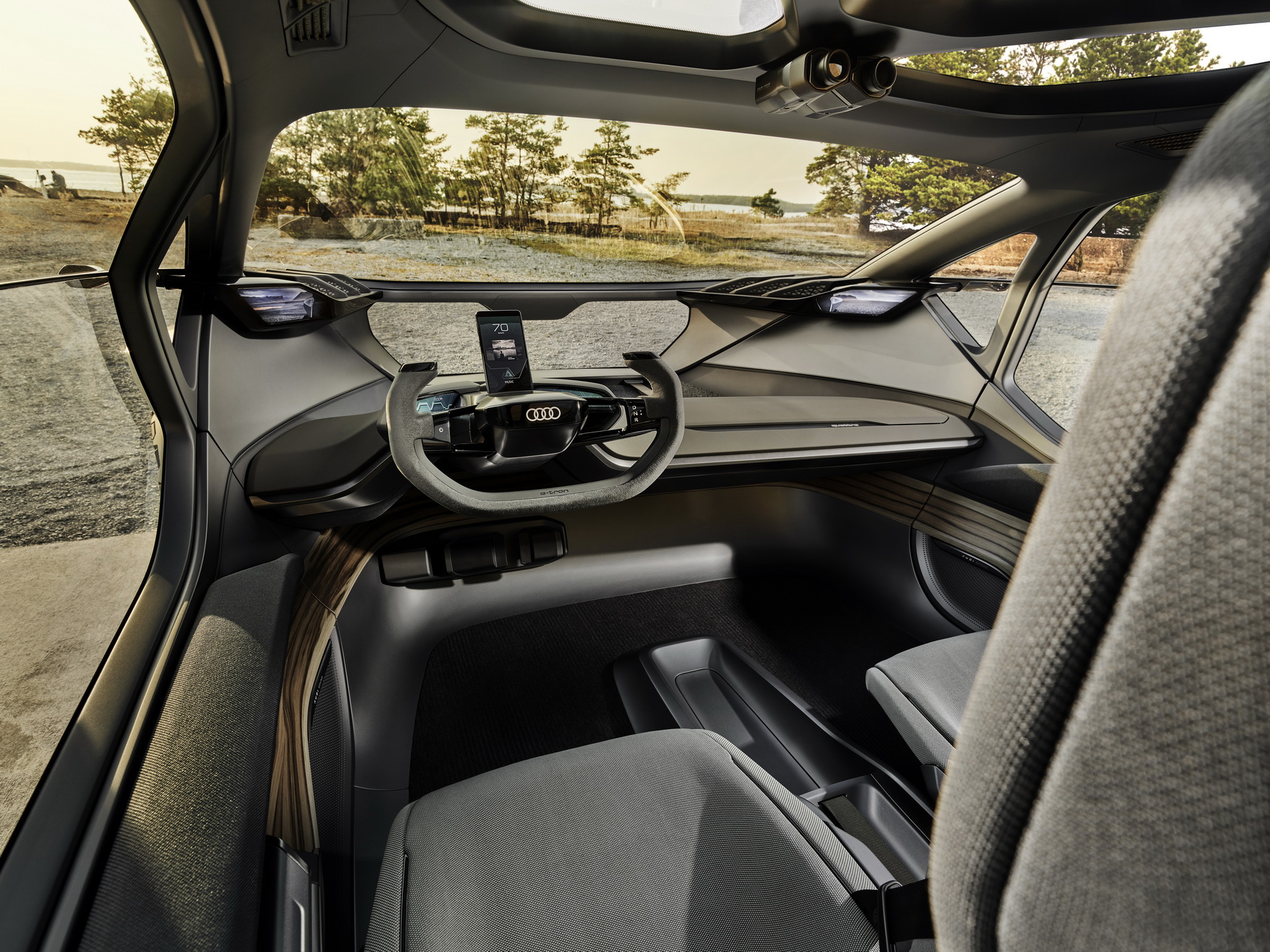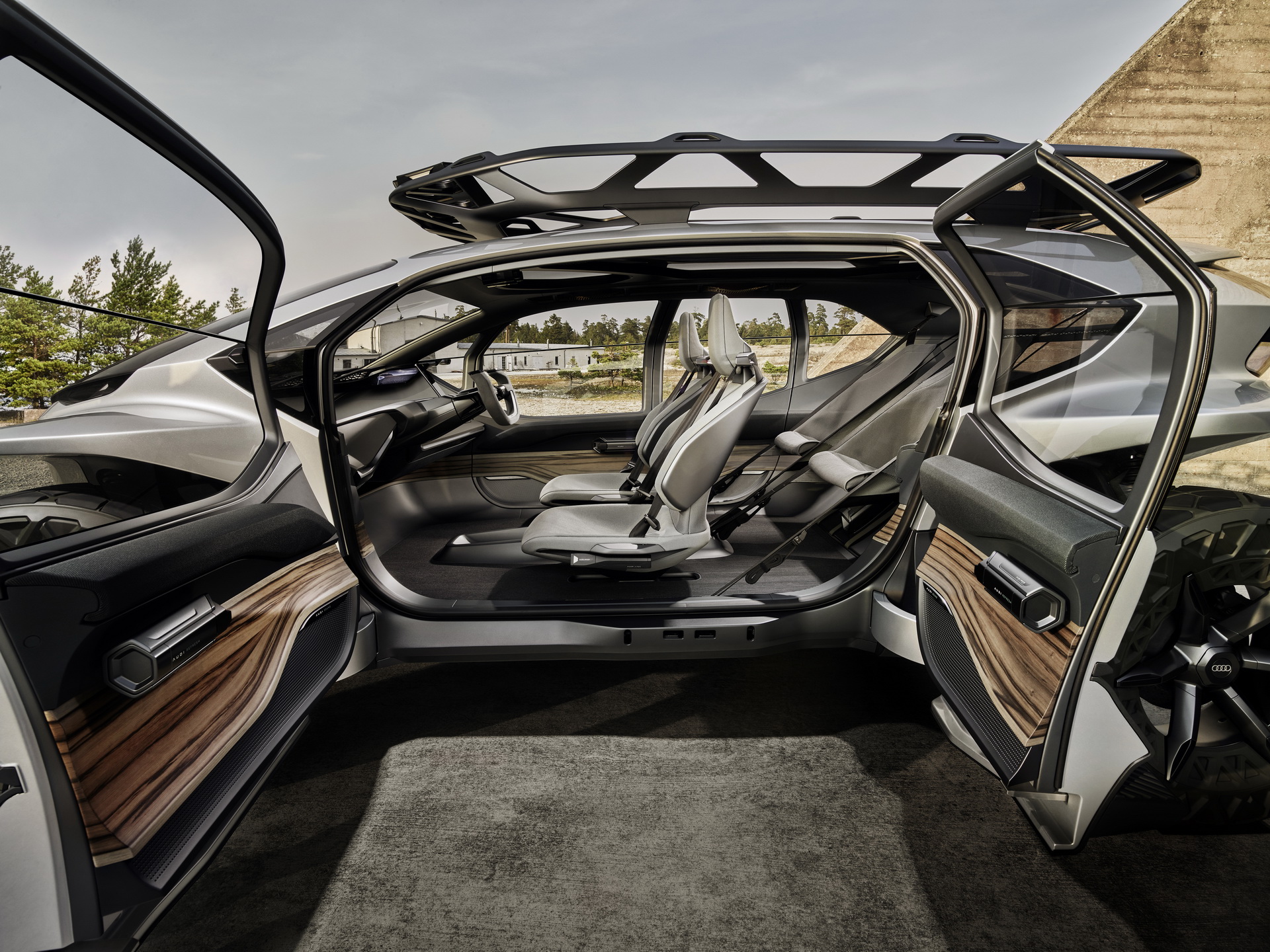Audi’s AI:TRAIL quattro Is An Off-Road Concept Out Of This World
Audi has pulled the wraps off the AI:TRAIL quattro concept, an electric off-roader study that combines automated driving with superb capabilities off the beaten track.
The lunar rover-looking concept is apparently previewing some of the design changes Audi has in mind for its future SUV models. The AI:TRAIL is the fourth member of Audi’s AI concept series, which begun with the 2017 Aicon.
The new Audi concept features four electric motors, one assigned to each wheel, with a combined output of 429 HP (435 PS) and 737 lb-ft (1,000 Nm) of torque. There are no differentials and locks, as you would assume, as the EV powertrain controls individually each motor depending on driving driving conditions.
Audi doesn’t specify the capacity of the onboard battery pack but says that the stated driving range is between 248 to 310 miles (400 to 500km) on paved roads or 155 miles (250 km) on rough ground. Top speed is limited to 80 mph (130 km/h).
Of course the concept’s highlight isn’t the hardware hidden underneath but the choices made for its bodywork; Audi opted for a helicopter-style all-round visibility, offering passengers an unobstructed view outside both in front and to the sides. The transparent panels on the front and sides make wonders on that frontier, as does the roof which is made almost entirely from glass.
The dashboard is free of any displays of its own; instead it uses the driver’s smartphone, which is attached on the steering column as a display and control center of the vehicle’s functions and navigation system. The no-screens policy inside the AI:Trail enabled Audi to give it a lower dash, further enhancing the visibility outwards.
The concept has a similar length with the Audi Q3, measuring 4.15 meters (13.5 ft) long and 2.15 meters (7.05 ft) wide. Ground clearance is set at 34 cm (13.4 inches), meaning it can ford through water more than half a meter (1.6 ft) deep.
Perhaps the wackiest feature of the Audi AI:TRAIL is that it doesn’t feature traditional headlights; instead it makes use of five, rotorless drones fitted with matrix LED elements. The driver could have them docked on the roof rack or have them fly ahead of the vehicle and illuminate the road. The drones also feature cameras than can transmit the image to the smartphone display in front of the driver.
carscoops





Comments
Post a Comment